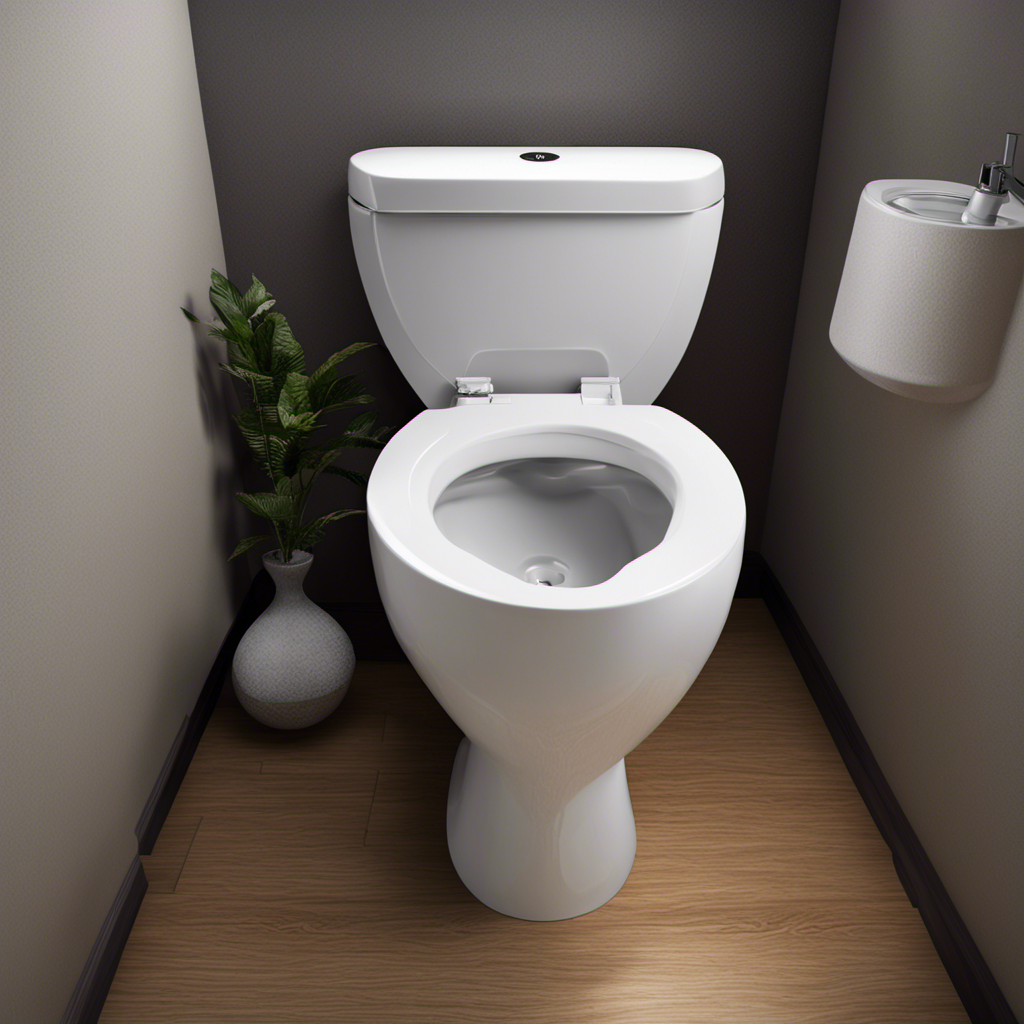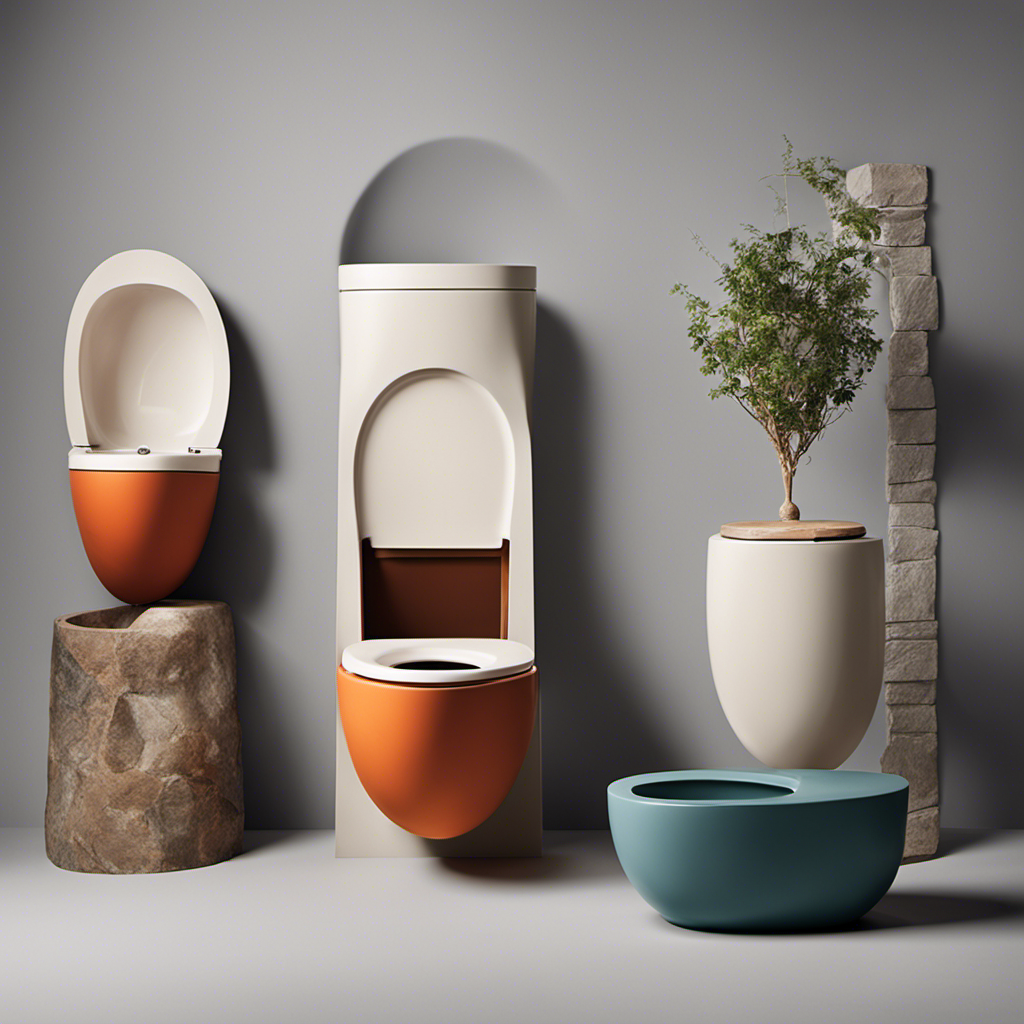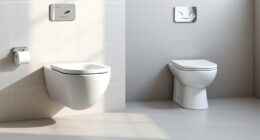Are you tired of staring into your toilet bowl, waiting for it to fill up, only to be left disappointed? Well, fear not, because this article is here to solve the mystery of why your toilet bowl is not filling up.
With our technical expertise and informative insights, we will guide you through the possible causes, common plumbing issues, and DIY solutions that may be affecting the water supply mechanism in your toilet bowl.
So, sit back, relax, and let’s dive into the world of toilet troubleshooting!
Key Takeaways
- Possible causes of a toilet bowl not filling up include problems with the fill valve, water supply valve not fully open, clogged or blocked fill valve, and faulty flapper.
- Common plumbing issues that affect toilet bowl fill include a faulty flapper, clogged water supply line, defective fill valve, continuous water leakage from tank to bowl, and inadequate water filling due to restricted flow.
- Steps to troubleshoot a toilet bowl not filling up include checking for a water supply issue, inspecting the fill valve for damage or malfunction, clearing any blockages in the water supply line, and ensuring the shut-off valve is fully open.
- Water supply issues that can cause a toilet bowl not to fill up include a clogged water supply line, faulty fill valve, malfunctioning flush valve, partially closed water supply valve, and low water pressure in the home.
Possible Causes of a Toilet Bowl Not Filling Up
One possible cause for your toilet bowl not filling up could be a problem with the fill valve. The fill valve is responsible for regulating the water flow into the toilet tank. If it is not functioning properly, it can prevent the tank from filling up and subsequently lead to a toilet bowl not filling up.
There are a few troubleshooting steps you can take to determine if the fill valve is the cause. First, check if the water supply valve is fully open. If it is, then the fill valve may need to be replaced.
Another possible cause could be a clogged or blocked fill valve. In this case, cleaning or replacing the fill valve may be necessary.
Common Plumbing Issues That Affect Toilet Bowl Fill
Some common plumbing issues that can affect the fill of your toilet bowl include a faulty flapper, a clogged water supply line, or a defective fill valve.
These issues can prevent the bowl from filling up properly after each flush. When the flapper is faulty, it fails to create a seal, causing water to continuously leak from the tank into the bowl. A clogged water supply line restricts the flow of water into the tank, resulting in inadequate filling. A defective fill valve fails to open fully, limiting the amount of water that enters the bowl.
To address these issues, consider checking the flapper for any wear or damage, clearing any clogs in the water supply line, or replacing a defective fill valve. Regular toilet bowl maintenance is crucial to ensuring proper fill and preventing further plumbing issues.
Steps to Troubleshoot a Toilet Bowl Not Filling Up
If you’re experiencing a toilet bowl not filling up, there are three key points to consider when troubleshooting the issue.
Firstly, check for a water supply issue by ensuring that the shut-off valve is fully open and that there are no obstructions in the supply line.
Secondly, a faulty fill valve can cause inadequate water flow, so inspect the valve for any signs of damage or malfunction.
Lastly, a clogged water line can impede the flow of water into the toilet bowl, so it’s important to check for any blockages in the line that may need to be cleared.
Water Supply Issue
Check if your water supply valve is fully open, as a partially closed valve could be causing the issue with your toilet bowl not filling up. If the valve is fully open and you still have low water pressure, there may be a problem with the water supply line or the overall water pressure in your home.
Here are some possible reasons for the water supply issue:
-
Clogged water supply line: A blockage in the water supply line can restrict the flow of water to your toilet bowl.
-
Faulty fill valve: The fill valve is responsible for regulating the water level in the toilet bowl. If it is not functioning properly, it may not allow enough water to enter the bowl.
-
Malfunctioning flush valve: The flush valve is a mechanism that controls the release of water from the tank into the bowl. If it is not working correctly, it may not allow enough water to enter the bowl during the flushing process.
Faulty Fill Valve
The faulty fill valve could be causing insufficient water to enter the toilet bowl. When the fill valve is not functioning properly, it can result in toilet bowl leaks and water pressure issues.
The fill valve is responsible for regulating the water flow into the toilet tank, which then fills up the bowl. If the fill valve is faulty, it may not allow enough water to enter, causing the bowl to not fill up adequately. This can lead to problems such as weak flushes or incomplete flushing.
If you suspect a faulty fill valve, it is recommended to have it checked and replaced if necessary. This will ensure proper water flow and prevent further issues.
Now, let’s move on to the next possible cause of your toilet bowl not filling up: a clogged water line.
Clogged Water Line
If you’ve checked the fill valve and it’s working fine, the problem with your toilet bowl not filling up may be due to a clogged water line. Within the plumbing system, there are pipes that transport water from the main supply to the toilet tank. When these pipes become clogged, it restricts the flow of water, leading to insufficient filling of the toilet bowl.
To help you visualize the clogged water line, imagine the following:
- The water line is like a network of interconnected pipes, similar to the veins in your body.
- Over time, mineral deposits and debris can accumulate inside the pipes, narrowing the passageway.
- Think of a clogged pipe as a traffic jam, preventing water from flowing freely to the toilet tank.
Understanding how the water supply mechanism in toilet bowls works is crucial in troubleshooting and fixing this issue. Now let’s delve into the next section and explore this mechanism in detail.
Understanding the Water Supply Mechanism in Toilet Bowls
If you are experiencing issues with your toilet bowl not filling up properly, it is important to understand the water supply mechanism and bowl refill mechanisms.
Troubleshooting these mechanisms can help identify and resolve the problem.
Water Supply Troubleshooting
Check if the water valve is fully open to ensure proper water supply to the toilet bowl. If your toilet bowl is not filling up, there might be some common toilet problems that you can troubleshoot. Here are some troubleshooting tips to help you identify and fix the issue:
-
Check the water valve: Make sure the water valve supplying water to the toilet is fully open. A partially closed valve can restrict water flow and prevent the bowl from filling up properly.
-
Inspect the fill valve: The fill valve controls the water level in the toilet bowl. Check if it is functioning correctly and not clogged or damaged.
-
Examine the float mechanism: The float mechanism regulates the water level by rising and falling with the water. Ensure that it is not stuck or obstructed, as this can disrupt the filling process.
Bowl Refill Mechanisms
To ensure proper water supply to the toilet bowl, make sure the water valve is fully open.
The bowl refill mechanism plays a crucial role in maintaining the water level in your toilet bowl. Modern toilet bowl designs typically use a gravity-fed system or a pressure-assisted system to refill the bowl after flushing.
In a gravity-fed system, water flows from the tank into the bowl due to the force of gravity. The water pressure in the supply line pushes water into the bowl, filling it up to the desired level.
However, if the water valve is not fully open, it can restrict the water flow, resulting in insufficient water in the bowl. It is important to check the water pressure and ensure that the valve is fully open to guarantee proper bowl refill.
Common DIY Solutions for a Toilet Bowl Not Filling Up
One common DIY solution for a toilet bowl not filling up is to adjust the float in the toilet tank. The float is responsible for controlling the water level in the tank, which in turn affects the water level in the bowl. By making adjustments to the float, you can ensure that the tank fills up to the desired level, allowing for proper flushing and refilling of the bowl.
Here are three steps to help you adjust the float and fix the issue:
- Locate the float in the toilet tank.
- Turn the adjustment screw on the float to raise or lower its position.
- Flush the toilet and observe if the water level in the bowl has increased.
Signs of a Malfunctioning Toilet Fill Valve
Now that you have tried some common DIY solutions for your toilet bowl not filling up, let’s discuss signs of a malfunctioning toilet fill valve.
One common sign is toilet bowl leaks. If you notice water pooling around the base of your toilet, it could indicate a problem with the fill valve.
Another sign is water pressure problems. If your toilet bowl is not filling up properly and you have checked for blockages or issues with the flapper, the fill valve could be to blame. It may be unable to maintain the correct water pressure, resulting in an incomplete fill.
If you are experiencing any of these signs, it may be time to consider seeking professional help.
Professional Help: When to Call a Plumber for a Toilet Bowl Not Filling Up
If you’re experiencing persistent issues with your toilet’s water supply, it might be time to call a plumber for professional assistance. When your toilet bowl is not filling up, it could be due to problems with the water pressure or the float mechanism.
Here are some possible causes to consider:
-
Water pressure issues:
-
Clogged pipes or valves restricting water flow.
-
Low water pressure from the main water supply.
-
Faulty pressure regulator affecting water flow to the toilet.
-
Float mechanism problems:
-
Misaligned or damaged float causing improper water level detection.
-
Stuck float preventing the valve from opening fully.
-
Worn-out or malfunctioning fill valve that needs replacement.
Conclusion
In conclusion, troubleshooting a toilet bowl that isn’t filling up can be a frustrating experience. However, with the right knowledge and steps, you can often resolve the issue on your own.
Remember, a common cause of this problem is a malfunctioning toilet fill valve, which can waste up to 200 gallons of water per day if left unchecked.
This staggering statistic should motivate you to take action and fix the issue promptly, not only for your convenience but also for the sake of water conservation.










